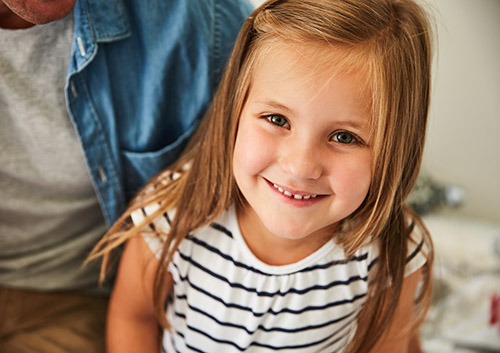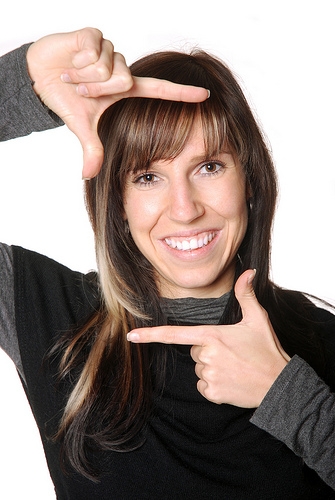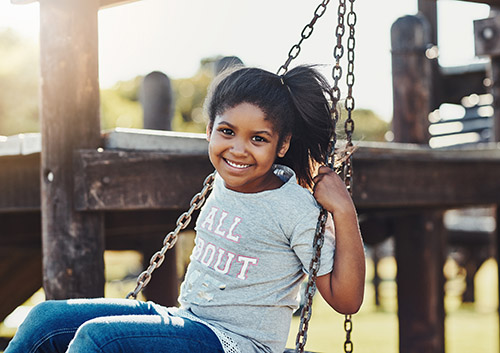
Part of every dental checkup is making sure all of your teeth are strong and healthy. David Jones will have you open wide to look at your teeth, use special little mirrors to get a good look around each tooth, and take X-rays to make sure your teeth are healthy both inside and out.
Why does your dentist want to check each tooth so carefully? One big reason is to look for cavities. What are cavities, and why don’t you want them? We have some questions and answers if you’re cavity-curious!
Just What Is a Cavity?
A cavity is a little hole in your tooth caused by tooth decay.
A Hole in My Tooth? How Did It Get There?
Most of the time, we get cavities because of plaque buildup.
Plaque is a sticky film that builds up on our teeth all through the day. It’s mostly made up of saliva (or spit), tiny bits of the food we chew, and germs called bacteria.
The bacteria in plaque use these food particles from our meals for their own food. Part of the way they use that food is to create acids.
Even though our teeth are very strong, acids can make them weaker as they break down the hard enamel on the outside of the tooth. This is the start of tooth decay. As time goes by, and more acids attack our tooth, a weak spot can grow larger and deeper, making a hole in the tooth.
Why Are Cavities Bad for My Teeth?
If a cavity gets too big, it can reach the inside of your tooth. Inside each tooth, we have pulp. Healthy pulp keeps our tooth alive, and it contains nerves which can feel pain. This is why a deep cavity gives you a toothache. If the pulp is damaged, your tooth is in danger.
How Can My Dentist Help?
When you have regular checkups, David Jones can find small cavities and treat them before they become big ones. This helps keep your smile healthy and toothache-free!
To start, your dentist will give you medicine to make the area around your tooth numb if you need it. When your tooth is numb, your dentist will clean away all of the decay with special small drills. They can be noisy, but they won’t hurt.
Once all of the decay is gone, your dentist will fill the hole with—a filling! A filling can be made of metal or a material which matches your tooth color.
When your appointment is finished, your tooth will be free from all the bacteria that were hurting it, the hole in your tooth will be filled, and you’ll be able to eat and bite and chew just like you could before. But what’s even better than treating a cavity? Preventing one!
How Can I Prevent Cavities?
There are lots of ways to get a cavity. Sometimes it’s caused by what people do, like eating lots of the foods which cavity-causing bacteria love. Sometimes, a cavity is caused by what people don’t do, like not brushing and flossing enough. And some people get cavities even with careful brushing and a healthy diet, so they might need extra help to protect their teeth.
Here are three very good ways to help stop cavities before they ever start:
The bacteria in plaque like sugars and starches because these foods are the easiest for them to use. And when they get more food, they make more acids. Desserts and sodas, soft breads and chips, and sugary cereals—these foods make tasty meals for bacteria and they stick to your teeth. Eating a balanced diet without too many sugary and starchy treats means fewer acids—and fewer cavities!
Brushing at least twice a day helps get rid of the sticky plaque holding those cavity-causing bacteria. Flossing helps remove plaque where your brush has a hard time reaching, like the spaces between your teeth. Your dentist and hygienist can show you the very best ways to brush and floss to get rid of the most plaque.
- Cavity-Fighting Treatments
Your dentist can also treat your teeth to help keep cavities from ever starting, especially if you’re someone who gets cavities more easily. Professional cleanings at our Naperville, Illinois dental office and dental sealants are two ways to protect teeth from plaque and bacteria. Your dentist will have some ideas just for you.
Together, you and your dentist make a powerful cavity-fighting team. If you have any questions about keeping your teeth their healthiest, your dentist has the answers!











 Website Powered by Sesame 24-7™
Website Powered by Sesame 24-7™